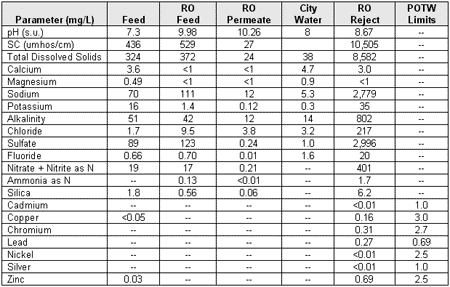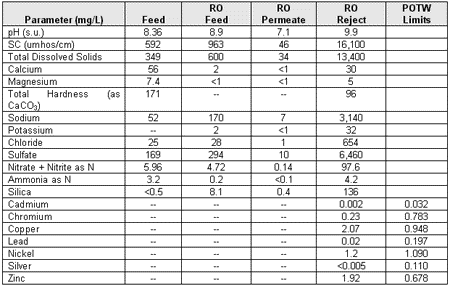Product Profile: Advanced membrane technology provides for economic reuse of metal finishing wastewaters
- Reducing operations costs by reducing makeup water and wastewater disposal costs; and
- Reusing water to meet environmental goals.
The patented HERO process combines both reverse osmosis (RO) and ion exchange (IX) to obtain the advantages of each process. It offers recoveries as high as 95 percent, which is much higher than conventional RO. By minimizing the waste stream, achieving zero-liquid discharge becomes much more economical. Operating costs for HERO are generally well below $1/1000 gallons, allowing a return on investment within 2 to 4 years in many urban areas.
The HERO process pretreats water with IX resin to remove hardness and metals in exchange for acidity, which lowers the pH of the water. The water is then degassed to remove the alkalinity, minimizing caustic addition in the next step. After the hardness and alkalinity are removed, the pH of the water is increased to approximately 10 and fed to an RO unit.
In conventional RO systems, membranes routinely foul with scale (divalent cation precipitates such as hardness, especially at high pH), organics (weak acids, oil and hydrocarbons), silt and microbiological growth. When this occurs, membranes are commonly cleaned off-line by using a high-pH solution. The HERO process eliminates these problems by removing the divalent cations that cause scale, and then operating the RO at a high pH that effectively cleans the membranes while treating the water. At high pH, oils are emulsified, biological growth is eliminated, organic acids are ionized, silica solubility in increased and silt rejection is improved. The elimination of membrane fouling dramatically lowers operational cost and complexity, making RO much more applicable for treatment of industrial wastewater than ever before.
Table 1 shows that in a small-scale pilot test with water from the first site, RO permeate was much softer and of generally better quality than the city water currently used for makeup to the plant. It can also be seen that the metals concentrations for RO reject were well below the POTW standards. This was true even at the high RO recovery (95 percent) used in the test. In some cases, a clarifier may be needed prior to HERO to remove metals and keep the reject metals concentrations within POTW standards.

Table 2 shows that high quality permeate, with a total dissolved solids concentration of 34 mg/L, was produced in the second test at 95 percent recovery. The RO reject met the POTW discharge limits for nearly all parameters. By removing a sequestering agent from the plant's process (to improve metals removal in the HERO process) and adjusting the RO recovery if necessary (to reduce the concentration factor), it is believed that the RO reject will meet all of the POTW limits.

Read more about the Advanced Membrane Technology (HERO).
For more information on Hydrometrics, Inc.'s product and services, visit their Storefront.
Read other articles about Hydrometrics, Inc. product applications:
Biological treatment of nitrate and perchlorate in groundwater
Metals and sulfate removal in a passive bioreactor
Analyzing a new biological treatment process for wastewater
Water purification and reuse at a pulp and paper mill
Subscribe to our free e-mail newsletter.
Click for a free Buyer's Guide listing.
